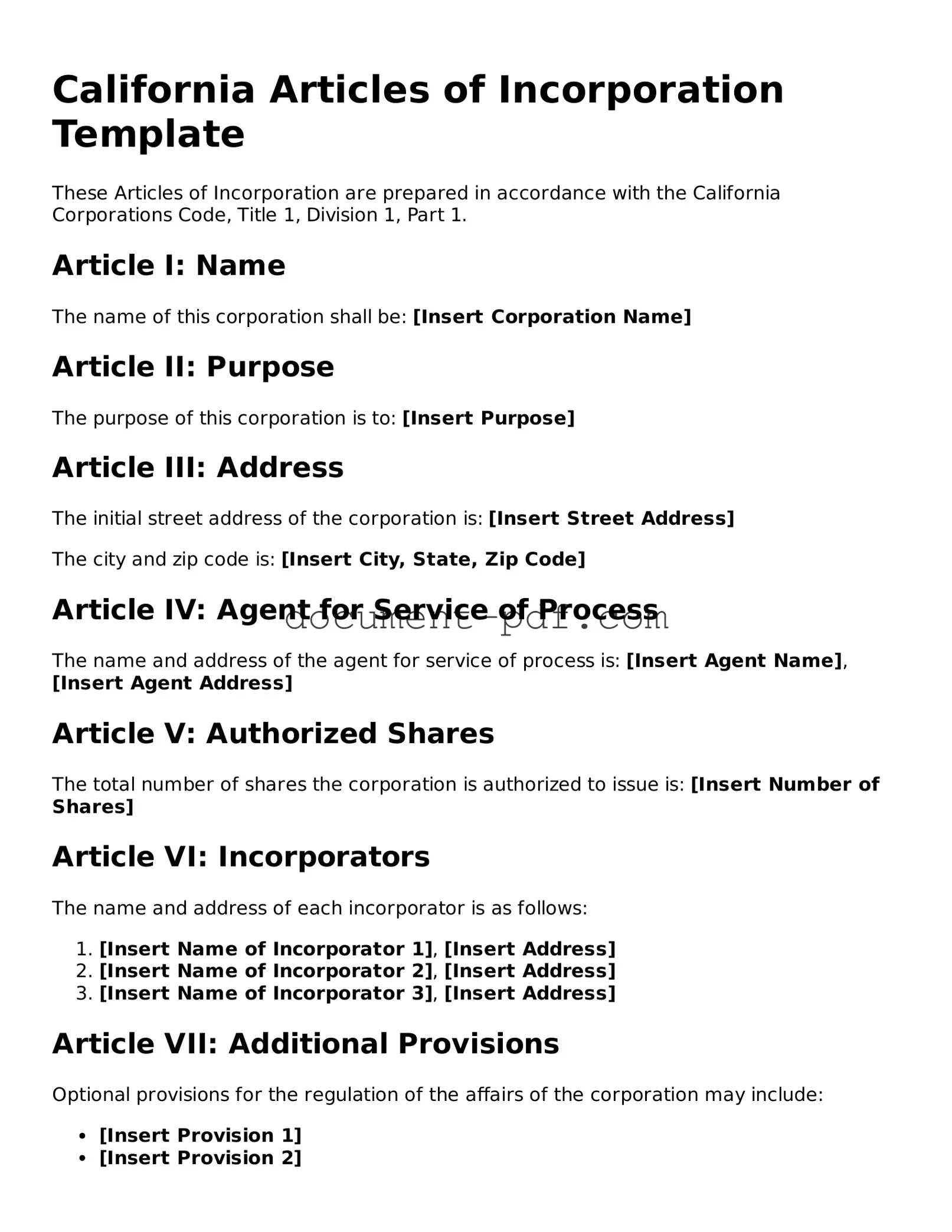The Articles of Organization is a document used to form a Limited Liability Company (LLC) in California. Like the Articles of Incorporation, it establishes the entity's existence in the state. Both documents require basic information such as the name of the entity, the address, and the registered agent. However, while Articles of Incorporation are for corporations, Articles of Organization serve LLCs, which have different operational structures and liability protections.
The Bylaws of a corporation outline the internal rules governing the management of the corporation. Similar to the Articles of Incorporation, which establish the corporation’s existence, Bylaws provide essential details about how the corporation will operate, including the roles of directors and officers, meeting protocols, and voting procedures. While the Articles are filed with the state, Bylaws are typically kept internally and are not submitted to any government agency.
The Statement of Information is a required document for California corporations that provides updated information about the company. It is similar to the Articles of Incorporation in that it must be filed with the state and includes key details about the corporation, such as the names and addresses of officers and directors. However, the Statement of Information is filed periodically to keep the state informed about any changes, whereas the Articles of Incorporation are filed only once at the time of formation.
The Certificate of Incorporation is a document used in some states to establish a corporation. It serves a similar purpose to the Articles of Incorporation in California, as both documents create a legal entity. However, the terminology may differ depending on the state. The Certificate of Incorporation may include similar information such as the corporation's name, purpose, and address, but the specific requirements can vary by jurisdiction.
The Operating Agreement is primarily used for LLCs and outlines the management structure and operating procedures of the company. While the Articles of Incorporation establish the corporation’s existence, the Operating Agreement details how the LLC will function. Both documents are essential for defining the entity's structure, but the Operating Agreement focuses more on internal management and member relationships, while the Articles focus on external legal recognition.
Understanding the intricacies of corporate formation is essential for aspiring business owners, and resources like PDF Templates Online can provide valuable documentation to support this process. Each component, from Articles of Incorporation to Bylaws, plays a pivotal role in ensuring a corporation functions smoothly while adhering to legal standards.
The Partnership Agreement is a document that outlines the terms of a partnership between two or more individuals. It is similar to the Articles of Incorporation in that it formalizes the relationship between the partners, much like how the Articles formalize the existence of a corporation. Both documents define roles, responsibilities, and the distribution of profits and losses, but the Partnership Agreement is specific to partnerships, which have different legal implications compared to corporations.
The Certificate of Good Standing is a document issued by the state that verifies a corporation is legally registered and compliant with state regulations. It is similar to the Articles of Incorporation in that both documents confirm the legal status of the entity. However, the Certificate of Good Standing is typically requested after the corporation has been established, while the Articles of Incorporation are the initial filing that creates the corporation.
The Business License is a permit issued by local government authorities that allows a business to operate within a specific jurisdiction. While it is not a formation document like the Articles of Incorporation, it is similar in that both are necessary for a business to legally function. The Articles of Incorporation establish the business as a legal entity, while the Business License ensures compliance with local regulations and permits the business to engage in its activities.
